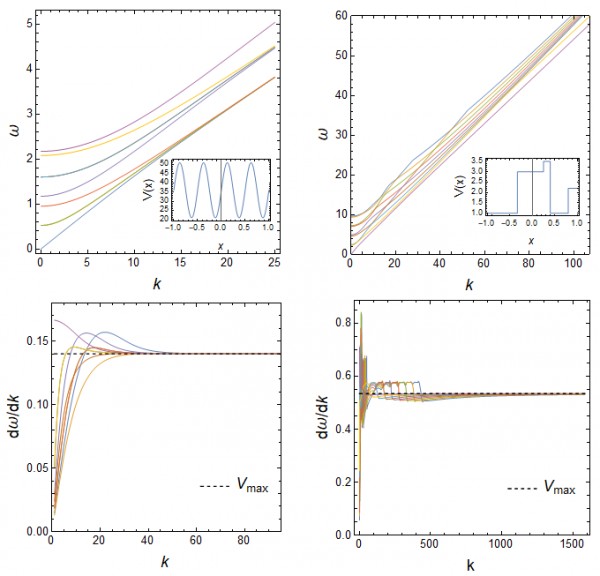Consider the following 2D wave equation:
(d2dx2−k2y+ω2 V(x))ψ(x)=0
where
V(x+L)=V(x)>0 is a positive periodic potential,
ky is the wave vector along
y-direction,
ω is the frequency, and the eigenfunction satisfies the periodic boundary condition
ψ(x+L)=ψ(x),
ddxψ(x+L)=ddxψ(x).
From the numerical solutions of several different periodic potentials V(x), I find that all bands approach to linear asymptotic dispersion ωn(ky) as ky→∞. And it seems that the asymptotic group velocities for different bands are identical and are only determined by the maximum of the potential V(x), namely
limky→∞dωndky=1/√Vmax.
The following figures show two examples (the first 9 bands in each case). However, I cannot prove this conjecture. Can some one help me prove or disprove this conjecture?

The insets in the upper subfigures are the profiles of the potential function V(x) in one period.
 Q&A (4912)
Q&A (4912) Reviews (205)
Reviews (205) Meta (440)
Meta (440) Q&A (4912)
Q&A (4912) Reviews (205)
Reviews (205) Meta (440)
Meta (440)